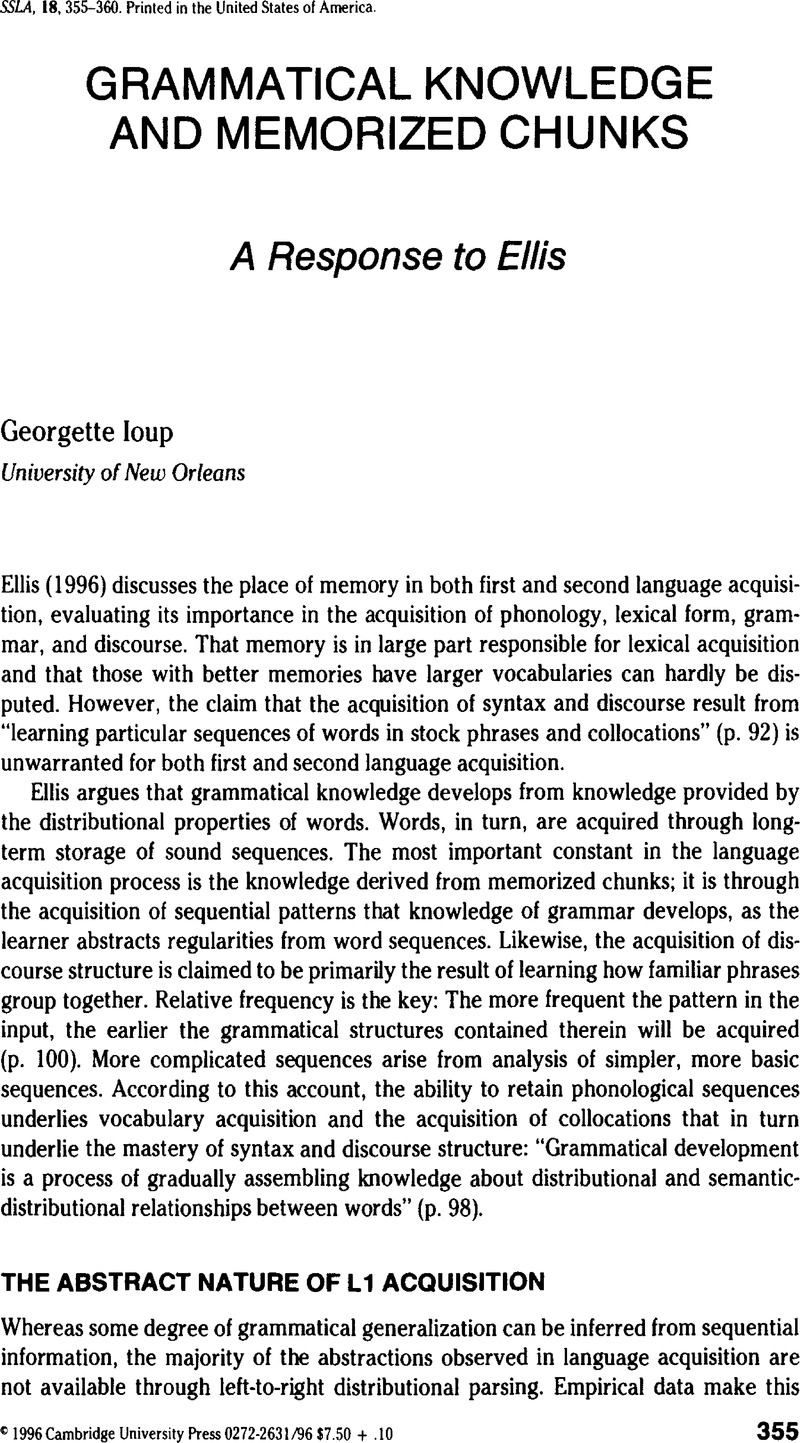Crossref Citations
This article has been cited by the following publications. This list is generated based on data provided by Crossref.
Pérez-Leroux, Ana T.
and
Glass, William R.
1999.
Null anaphora in Spanish second language acquisition: probabilistic versus generative approaches.
Second Language Research,
Vol. 15,
Issue. 2,
p.
220.
Ellis, Rod
2005.
MEASURING IMPLICIT AND EXPLICIT KNOWLEDGE OF A SECOND LANGUAGE: A Psychometric Study.
Studies in Second Language Acquisition,
Vol. 27,
Issue. 02,



